An open circuit is an electric circuit that does not allow the electric current to pass in the circuit. Contrary to an open circuit, a closed circuit makes the circuit complete, and current flows through the circuit. In simple terms, if a closed circuit path breaks anywhere, the circuit becomes open, and the electric current does not flow in the circuit.
When an electric circuit breaks, the potential difference at the points of breaking is equal and no current flows through the circuit.
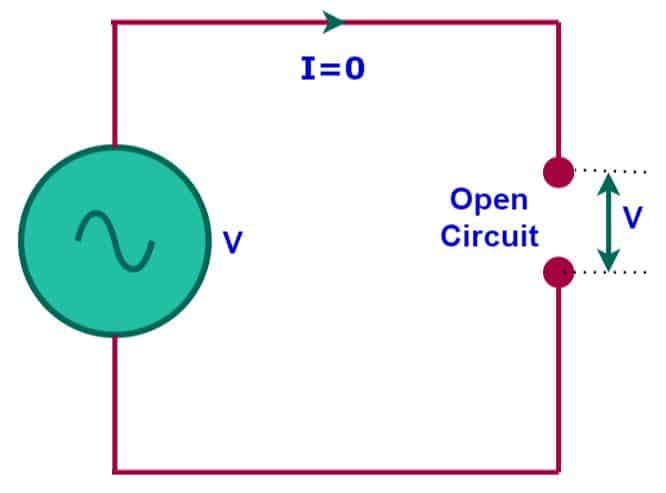
In an open electric circuit,
- Electric current is zero
- The potential difference exists at two points where circuit breaks
- The power is equal to the product of voltage and current. Thus. P=VI. The current in the circuit is zero therefore the power is zero, despite voltage being present.
Now, we have discussed that the electric current in an open circuit is zero. Now, let us discuss what the resistance of the open circuit is.
Open Circuit Resistance
The current flowing in an open circuit is zero. It simply means that the resistance of the open circuit is infinitive. We all know that resistance opposes the flow of current. The zero current in the circuit means the circuit offers infinite resistance. An open circuit does not permit the current to flow in the circuit.
We can prove the above statement by Ohm’s Law. The Ohms law is;
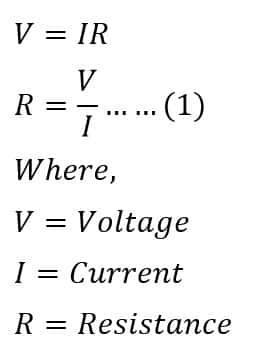
The value of the electric current in the open circuit is zero(I=0). Putting the value of current in equation(1), we get;
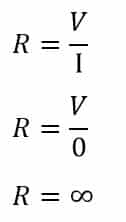
Hence, the resistance of the open circuit is infinite.
Open Circuit Examples
The open circuit happens when the electrical conductor breaks and physically separates. The physical separation of the electrical conductor creates an open circuit. An on /off switch creates an open circuit when the bulb is switched off. The off position of the switch breaks the circuit and no current pass through the filament lamp.
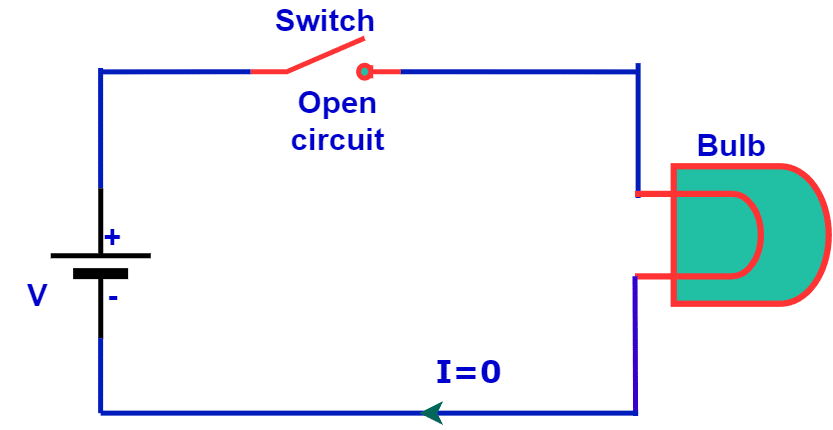
Also, when the filament of the bulb gets open, it creates an open circuit. When we close the switch, it makes a close path, and current flow through the filament lamp. The circuit diagram of the closed path of the filament lamp is shown below,
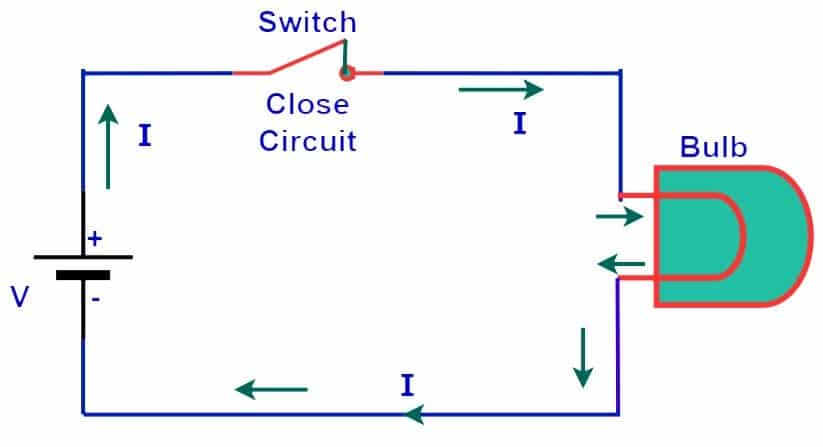
There are various reasons for an open circuit in the electrical conductor as well as an open circuit in the electrical equipment. The various reasons for the open circuits are as follows.
- The damage to the underground cable conductor is caused by excavation or digging.
- Strong wind cause dislocation of the conductor from its connection point
- Heavy current during a short circuit, earth fault may cause an open circuit.
- Heavy current in electrical machines may cause winding open circuits.
- A fusing of the heating element causes an open circuit.
In all the above cases, an open circuit is undesirable and it causes a power outage and deteriorates the reliability of an electrical power network.
However, to enhance the electrical system’s reliability, it becomes essential to break the circuit during fault conditions without damaging the electrical equipment. An example is the fuses in an electrical circuit.
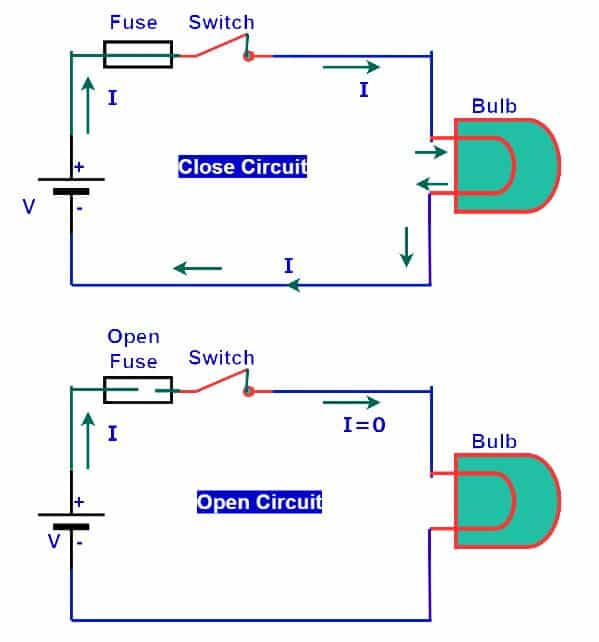
The fuse opens when the electrical current through the circuit exceeds the rated current capacity of the fuse. This is an example where we deliberately make the circuit open.
Open Circuit vs Short Circuit
The circuit diagram of the open circuit, close circuit, and short circuit is given below.

The open circuit and close circuit have just opposite configurations. When an electrical circuit is open, the current flowing through the circuit is zero because the resistance between the open-circuited terminals is infinite. The voltage between the open-circuited terminal is equal to the source voltage.
On the other hand, the short circuit causes almost zero resistance, and the circuit draws a large current from the supply source. The voltage between the short circuit terminals is almost zero.
The close circuit is the circuit that draws normal current according to the resistance or impedance of the circuit. The current flows from the positive terminal to the negative terminal of the source when the circuit is closed.